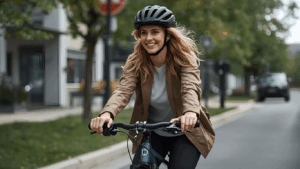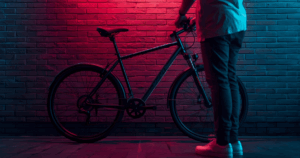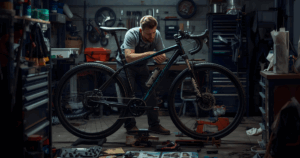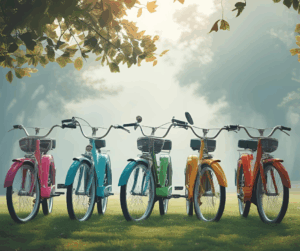In an era of rapidly advancing mobility solutions—from electric scooters to self-driving cars—it might seem like traditional bikes are being left in the dust. But step into any major city at rush hour, and you’ll see something surprising: the bike is not only surviving—it’s thriving. Despite the buzz around high-tech alternatives, bicycles remain a cornerstone of urban transportation, wellness, and environmental consciousness.
This resurgence isn’t a coincidence. With more cities investing in cycling infrastructure and more individuals seeking healthier, more sustainable lifestyles, the humble bicycle is finding new relevance in the modern world. Whether you’re a daily commuter, a weekend adventurer, or a parent navigating the school run, there’s a bike designed to meet your lifestyle.
In this blog, we explore why bikes—despite all the innovation in mobility—continue to be one of the best investments for urban living and beyond.
1. The Bicycle: An Old Solution for New-Age Problems
The first bicycle dates back to the early 1800s, but its relevance in today’s cities is more pronounced than ever. Why? Because the problems we’re trying to solve—traffic congestion, pollution, health issues, and affordability—are exactly the problems bikes are built to fix.
Traffic Congestion: Bikes can slip through traffic jams, use dedicated cycling lanes, and reduce road usage. They take up less space on the road and even less space when parked.
Environmental Impact: Bicycles have zero tailpipe emissions. They don’t rely on fossil fuels or batteries filled with rare earth metals. Their carbon footprint—especially when built and maintained locally—is minuscule compared to cars or motorized alternatives.
Health Benefits: Incorporating biking into daily routines significantly improves cardiovascular health, strengthens muscles, boosts mental clarity, and helps regulate weight. It turns the daily commute into a workout, without the gym membership.
2. Urban Commuting: The Bike as a Daily Workhorse
For city dwellers, time is money—and so is space. Bicycles provide a compact, efficient, and often faster way to navigate busy streets compared to cars or even public transport during peak hours.
Cost Savings: The average commuter in a city like Singapore spends hundreds of dollars monthly on public transport, parking, or petrol. A bicycle—once purchased—costs next to nothing to operate.
Time Efficiency: In many cities, cycling short-to-medium distances can be faster than driving, especially when bicycle lanes bypass vehicle traffic.
Multi-Modal Flexibility: Need to hop on a train? Foldable bikes and compact commuter models can easily accompany you on public transport, eliminating the “last mile” problem.
3. Types of Bicycles for Different Riders
The bike market is more diverse than ever, offering specialized models to meet specific needs. Here’s a breakdown:
1. Commuter Bicycles
Designed for everyday use, commuter bikes prioritize comfort, durability, and utility. Features often include:
- Upright seating posture
- Fenders to keep clothing clean
- Built-in racks or pannier mounts
- Internal gear hubs for low maintenance
These are ideal for the daily office run or school drop-offs, and they often include lights, bells, and other urban-ready features right out of the box.
2. Road Bicycles
Built for speed and efficiency on smooth pavements. With lightweight frames and thin tires, road bikes are best for longer-distance commuters or enthusiasts looking to build stamina and performance.
3. Mountain Bicycles
Equipped with suspension systems and wider tires, mountain bikes are perfect for trail riders and those who like to go off the beaten path. In urban areas, they double as durable options for rough roads or longer mixed-terrain commutes.
4. Hybrid Bicycles
A crossover between road and mountain bikes, hybrids offer a balanced ride with moderate speed, comfort, and light off-road capability—ideal for recreational riders or beginners.
5. Cargo Bicycles
These bikes come with large racks or front-loading spaces to carry groceries, gear, or even kids. Increasingly popular among urban families and small delivery businesses.
6. Folding Bicycles
Small, nimble, and storable in tight apartments or office cubicles. Folding bikes are a favorite among commuters with limited space or multi-modal travel needs.
4. Cycling as a Lifestyle, Not Just Transport
Bikes are more than tools—they’re a lifestyle. For many, cycling is a daily ritual, a source of pride, and a way to connect with their surroundings. Here’s why:
Community Building: Cycling groups, clubs, and meet-ups are everywhere—from weekend rides to night city tours. Joining a cycling community is a great way to meet people, stay motivated, and discover new routes.
Mindful Travel: Riding a bicycle helps you engage with your environment. You notice smells, sounds, and textures often missed when you’re behind the wheel or on a bus.
Customization & Identity: Like cars or sneakers, bicycles are extensions of personality. Riders customize colors, accessories, and even frame shapes to reflect who they are.
5. Safety and Infrastructure: Are Cities Ready?
One of the biggest deterrents to cycling has always been safety. But that’s changing fast. In cities around the world, there’s a growing emphasis on:
- Dedicated bike lanes
- Bike traffic signals
- Secure parking spaces
- Bikeshare stations
Some cities are even experimenting with bicycle highways—separated, high-speed bike routes to get riders safely across longer distances.
Singapore, for example, has steadily increased its Park Connector Network (PCN), creating car-free corridors for riders across the island. Cities like Amsterdam and Copenhagen are leading the way with near-utopian infrastructure for cyclists.
As safety improves, more people will feel confident switching from cars or buses to bicycles for daily needs.
6. The Tech Side of Traditional Cycling
Even without motors, bikes have benefited from advances in materials, design, and smart integration.
Smart Helmets: Some come with turn signals, brake lights, and Bluetooth for calls or music.
Connected Locks: GPS-enabled locks notify your phone if your bike is being tampered with and can even disable the drivetrain.
Materials: Carbon fiber and titanium frames are lighter and stronger than ever, making high-performance bikes accessible to more people.
Drivetrains & Gearing: Belt drives are replacing chains in some models, offering silent, maintenance-free operation. Electronic shifting systems are becoming more common even on non-electric bikes.
7. Maintenance: Simplicity Is Strength
Compared to cars, bikes are refreshingly simple machines. Most riders can learn basic upkeep, including:
- Inflating tires
- Adjusting brakes
- Cleaning and lubricating chains
- Replacing tubes
Routine maintenance keeps bicycles running smoothly for years. There are also mobile bike services now—kind of like Uber for bike repairs—that come to your home or office.
Tip: Invest in quality tires and brake pads. These two components affect performance, safety, and longevity the most.
8. Comparing Bikes to Ebikes and Scooters
While ebikes and electric scooters have captured market attention, traditional bicycles still hold ground in several areas:
| Feature | Traditional Bike | Ebike | E-Scooter |
|---|---|---|---|
| Cost (Upfront) | Low | High | Medium |
| Maintenance | Low | Medium | High |
| Exercise | High | Medium | Low |
| Range | Unlimited (your legs) | 30–120km | 20–50km |
| Speed | 10–25km/h | 25–45km/h | 20–25km/h |
| Portability | Medium–High | Low–Medium | High |
For purists, athletes, and minimalists, the traditional bicycle remains unbeatable in simplicity, cost-efficiency, and health value.
9. Making the Switch: Tips for First-Time Riders
If you’re new to biking or returning after a long break, here are a few things to keep in mind:
- Start Small: Begin with short rides in safe areas. Gradually increase distance as your confidence builds.
- Gear Up: A good helmet, lights, and reflective wear can make a world of difference.
- Know the Rules: Familiarize yourself with local traffic laws and cycling paths.
- Stay Visible: Use daytime running lights and hand signals when turning or stopping.
- Test Ride Before Buying: Every bicycle feels different. Try several to find what suits your body and riding style.
Conclusion: Reinventing the Wheel—One Pedal at a Time
In a world that’s constantly chasing what’s new, there’s something powerfully reassuring about the bicycle. It reminds us that sometimes, the best solutions are the simplest. As cities become more congested, individuals more health-conscious, and the planet more fragile, the case for cycling only grows stronger.
Yes, there are newer, flashier mobility options out there. But few offer the balance of fitness, freedom, sustainability, and affordability that a good bicycle does. Whether you’re riding to work, exploring a park, or picking up dinner from your local hawker stall, your bicycle is more than just a tool—it’s a partner in your journey.
So dust off your helmet, pump up those tires, and get back to basics. The road is calling—and your bike is ready.





